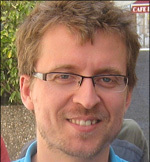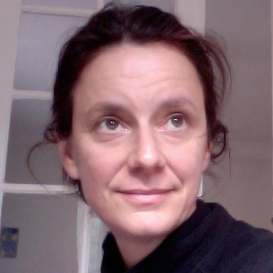Confirmed keynote speakers:
 Belinda Chang, Department of Ecology and Evolutionary Biology, University of Toronto, Canada. | Using evolutionary comparative approaches and ancestral reconstruction to understand the molecular basis of visual adaptations The initial step in vision in all vertebrates is triggered via absorption of a photon by a visual pigment located in the photoreceptors of the eye. Variation in the functional properties of visual pigments can therefore have profound consequences for the visual capabilities of an organism. The visual system has a surprisingly large dynamic range, and is highly specialized for the efficient sensing of light in extremely diverse light environments. How is this achieved at the molecular level? Advances in computational methods to infer ancestral sequences, and to estimate patterns of selective constraint, can be used to infer hypotheses of molecular adaptation that can then be tested in the laboratory. Lineage specific models of evolution can be used to identify shifts in selective constraint associated with ecological or physiological changes that can then be experimentally investigated. We have used these approaches to investigate interesting evolutionary transitions such as the loss of an entire photoreceptor class in snakes and other reptiles, and the evolution of vision in dim-light environments in aquatic animals. |
 Dannie Durand, Department of Biological Sciences, Carnegie Mellon University, USA. | Evolutionary remodeling of a bacterial signaling pathway Survival in a changing world requires flexible signaling circuitry that can evolve to sense new environmental challenges. The Firmicute sporulation initiation (Spo0) pathway is a compelling example of pathway remodeling over the course of evolution. In Clostridium acetobutylicum, a sensor kinase directly activates the master regulator of sporulation, Spo0A. In Bacillus subtilis, Spo0A is activated indirectly via a four-protein phosphorelay. These observations led to the widely accepted hypothesis that the ancestral Spo0 pathway in the earliest spore-former had the simpler direct phosphorylation architecture; the Spo0 phosphorelay arose later in Bacilli via gain of additional proteins and interactions. Our analysis of 84 Firmicutes genomes surprisingly reveals phosphorelays in many Clostridia, as well as Bacilli. This is consistent with a model wherein sporulation was initiated by a phosphorelay in the ancestral spore-former and the simpler direct phosphorylation architecture is a derived state. This model is further supported by in vitro phosphotransfer experiments in which replacing any Bacillar phosphorelay protein with the corresponding protein from a Clostridial phosphorelay results in a functional pathway. Thus, the interaction specificity of Spo0 phosphorelay proteins has not changed since their divergence from the ancestral phosphorelay over 2.7 BYA. Finally, the phylogenetic distribution of Clostridial direct phosphorylation Spo0 pathways is patchy. This suggests multiple, independent instances of remodeling from phosphorelay to direct phosphorylation by acquisition of a kinase capable of phosphorylating Spo0A. We conclude that flexible encoding of interaction specificity, a phenotype that is only intermittently essential, and the recruitment of kinases to recognize novel environmental signals resulted in repeated Spo0 pathway simplification. |
 B. Jesse Shapiro Department of Biological Sciences, Université de Montréal, Québec, Canada. | Origins of pandemic cholera strains from the environment, and their fate within patients Bacterial pathogens often emerge from nonpathogenic ancestors, and then continue to evolve within patients. Using population genomics and experimental studies of Vibrio cholerae, the bacterium responsible for cholera, we have identified Virulence Adaptive Polymorphisms (VAPs) that circulate in the aquatic reservoir of V. cholerae and that are required to infect mammalian hosts such as humans. We are also tracking V. cholerae evolution within individual patients to identify very recent mutations that might affect colonization and virulence. We propose that evolutionary tradeoffs – mediated by mutations that are beneficial on short time scales (e.g. within a patient) but maladaptive on longer time scales – are important in limiting the emergence and transmission of cholera. |
 Christian Landry, Institute for Integrative Systems Biology, Laval University, Canada. | Organization and Evolution of Cellular Networks The role of natural selection and other evolutionary forces in the evolution of complex traits has been extensively documented. However, we know very little on how the inner organization of cells respond to these driving forces. Also largely unknown is how the internal organization of the cell itself may affect the course of evolution, for instance in the recruitment of new genes. I will present our recent work on the evolution of protein interaction networks, including how gene duplication affects their organization and robustness. I will also discuss how the physical association of duplicated proteins may determine the potential for new genes to contribute to novel functions on the long term. Finally, I will discuss open questions in biology that require the combined approaches of evolutionary and cell biology to be fully answered at the mechanistic level. |
 Gwenaël Piganeau, Banyuls Oceanographic Observatory and National Centre for Scientific Research, France. | Virus-Host Coexistence in Phytoplankton Through the Genomic Lens. Tiny photosynthetic microorganisms that form the picoplankton (with cells between 0.3 and 3 μm in diameter) are at the base of the food web in marine ecosystems. They are outnumbered by about ten to one by viruses, which can lyse host cells and thereby contribute to biogeochemical cycles by promoting the turnover of plankton populations. Genomic and metagenomic approaches have revealed an unexpected genetic diversity of both microalga and viruses, at a rate outpacing our ability to identify host-virus specificity patterns and life history traits, which require isolation and cultivation in the lab. In my lab in Banyuls sur mer, we have been isolating and sequencing many green eukaryotic microalga (Mamiellophyceae) and Prasinoviruses, large double stranded DNA viruses infecting them. Their compact haploid genomes (13 to 22 Mb) and ease of culture make them ideal models to understand the mode and tempo of phytoplankton-virus interactions. During this talk, I will present our results obtained from both population genomics and experimental evolution approaches to understand the mechanisms involved in the Mamiellophyceae – Prasinovirus system dynamics, with a special focus on the genomic basis of resistance and susceptibility in the microalga. |
 Xavier Roucou, Department of Biochemistry, University of Sherbrooke, Canada. | Back to reality: updating the coding potential of genomes and recognizing the polycistronic nature of eukaryotic genes According to conventional assumptions, one eukaryotic mRNA carries a single annotated protein-coding open reading frame (ORF) and produces one protein only, and RNAs annotated as non-coding (ncRNAs and pseudogene RNAs) produce no proteins. In addition, a minimum length of 100 codons is generally used as a key feature for a coding ORF. These criteria largely limit the landscape of eukaryotic genomes’ coding potential and our capacity to achieve a more comprehensive characterization of the proteome in biological systems. Indeed, there are now functional evidence for previously unannotated ORFs in drosophila, plants and other eukaryotes, and genome annotations need to be revised. These “hidden” ORFs are found in multiple places within RNA: within "ncRNAs", within 5′ and 3′ untranslated” regions (UTRs) of mRNAs, or overlapping canonical coding sequences (CDSs) in an alternative reading frame. They are, in general, notably smaller than annotated ORFss, but they are not limited to small ORFs. Genome-wide monitoring of ribosomes activity by Ribo-seq uncovered a large number of these ORFs. Proteogenomics using customized protein sequence database and mass spectrometry also regularly provides accumulating evidence for the translation of unannotated ORFs. Ribosomes are incredible molecular machines capable of translating annotated and unannotated coding sequences. We must face this reality and recognize the polycistronic nature of eukaryotic genes. |